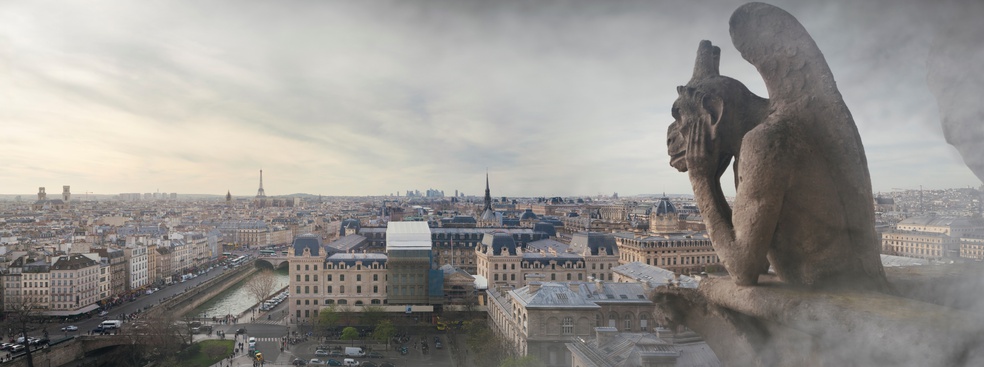The fire at Notre Dame could have been avoided
On April 15th, 2019, the Notre Dame Cathedral in Paris suffered a terrible fire. In just a few hours, the spire and two-thirds of the roof collapsed. The cathedral’s interior was also severely damaged. The Paris public prosecutor’s office released their preliminary findings two months later. There was no sign of a break-in and the analysis of the debris from the roof didn’t turn up a trace of fuel. Thus, the prosecutors ruled out arson. Instead, they proposed two hypotheses to explain how this disaster came about.
The first hypothesis was an improperly extinguished cigarette. When the fire broke out, Notre Dame was undergoing extensive renovation work. After being interrogated, several workers confessed to smoking on the scaffolding. The DNA analysis of the cigarette butts found at the base of the scaffolding confirmed that this was the case. However, the fire began inside the cathedral, and the investigators weren’t able to determine if the workers had smoked inside. The second hypothesis was an electrical short circuit. The workers had stored some of the scaffolding in the roof and it is possible that this had damaged the electrical wiring of the bells and triggered a short circuit.
But the Notre Dame fire can’t be fully explained by these human errors, committed by the “frontline” employees. Like most other disasters, it has deeper roots. For one thing, the cathedral’s fire safety system had critical flaws. While Firefireproof Fireproof partitions and automatic sprinklers could have saved the attic and the spire - but, Notre Dame did not have eitherany of this equipment. Its fire safety system relied entirely on detecting the issue and acting quickly to prevent the outbreak of a fire. Additionally, safety was not a priority at Notre Dame. During the renovations, the construction site didn’t have any additional oversight. One cathedral employee noted: “Unlike what one might think, no one came to check the construction site after the workers left.”
In a recently published article, Jérôme Bathélemy, Professor of Management at ESSEC Business School, suggests that the Notre Dame fire was a “predictable surprise” that could have been avoided. American researchers Michael D. Watkins and Max H. Bazerman originally defined a predictable surprise as “an event or series of events that take an individual or group by surprise, despite them having all the necessary information to anticipate these events and their consequences.”
Four characteristics distinguish predictable surprises from events that are truly impossible to predict.
First, leaders know that problems exist… but they do nothing to address them. Fires often occur in historical monuments. The impact of renovations is also well-known. As an architect who specializes in historical monuments noted: “We know that fires often occur at these times, when the old buildings are a bit stirred up.” Despite that, additional safety measures weren’t taken during the renovations. Three years before the disaster, researchers from the Centre national de la recherche scientifique (CNRS, the National Centre for Scientific Research) tried to warn that the cathedral was vulnerable to fire. As one researcher recalled: “Indeed, we said that the roof was at risk of catching on fire and it was essential to protect it and install a sprinkler system.” Unfortunately, the recommendations from the CNRS report were not implemented.
Second, employees realize that the problems are getting worse… but no one listens to them. At Notre Dame, the Direction régionale des affaires culturelles (DRAC, the regional cultural affairs directorate) was responsible for fire prevention. As this authority didn’t properly maintain the fire safety system, it quickly malfunctioned. One security guard said:“There were false alarms in the turrets and the roof - at one time, over 10 per day. Since this was unbearable, the DRAC asked us to put the system on restricted mode.” Over time, the DRAC also lessened safety measures, reducing the number of security guards and closing the security post overnight. This bothered many of the security guards. One of them commented: “I felt like it had become very dangerous. I told my wife that we were so few over there that if anything happened, it was far too much responsibility.”
Third, resolving these problems would incur significant spending. As mentioned above, the investigators proposed two hypotheses to explain the fire: a poorly extinguished cigarette and an electrical short-circuit. They also concluded that there was “unintentional damage by fire due to a deliberate violation of a duty of care or safety imposed by law or regulation.” In other words, the disaster was the result of negligent safety measures. Safety does not come cheap. Like many other organizations, the DRAC didn’t invest enough in this area, with dramatic consequences.
Fourth, solving these problems would require challenging the status quo. Even though the flaws of the fire safety system were quickly apparent, its creator and his successor always refused to rethink their decision not to equip the cathedral with fireproof partitions and an automatic sprinkler system. Their reluctance to “mutilate” the wooden structure of the roof resulted in its destruction. While the clergy could have asked the DRAC to improve the safety measures at Notre Dame, they too opted to maintain the status quo. This enabled them to install several electric bells in the roof and the spire - against all safety regulations.
Four years after the Notre Dame fire, the file on the matter is about to be closed. However, the French Ministry of Culture seems to have learned from this predictable surprise. In 2020, they asked for an audit of 86 other French cathedrals, emphasizing specifying that particular attention must be paid to electrical installations and other changes made during renovations work. In February 2022, Jean-Louis Georgelin, president of the public institution dedicated to conserving and restoring Notre Dame, announced the installation of fireproof partitions and a sprinkler system at Notre Dame. This is good news, but it will not bring back the 13th century wooden structure and spire. They are lost forever.
This article was published in French on The Conversation and republished with the Creative Commons license. Read the original article.
English translation by Julia Smith, editor-in-chief, ESSEC Knowledge.









